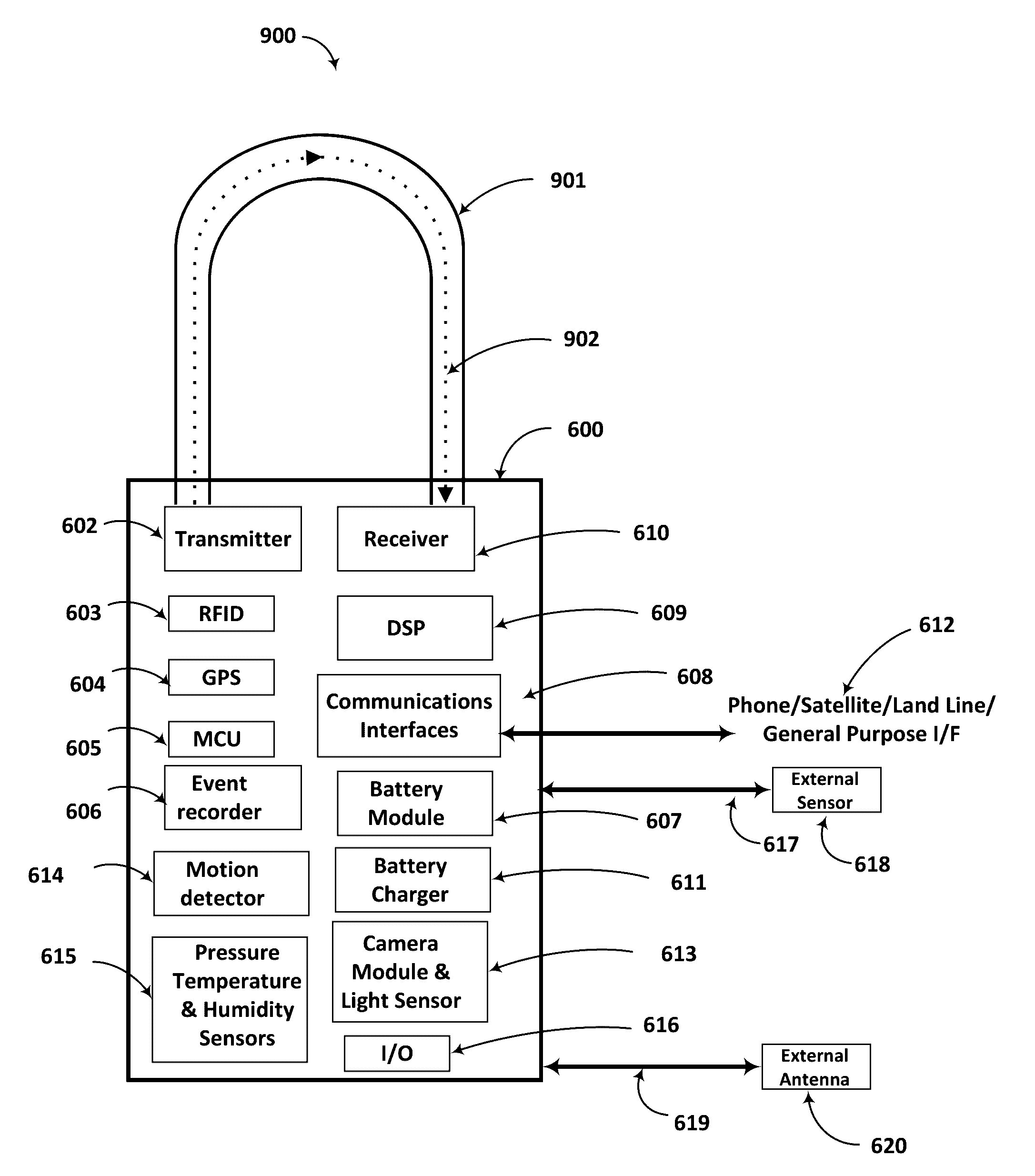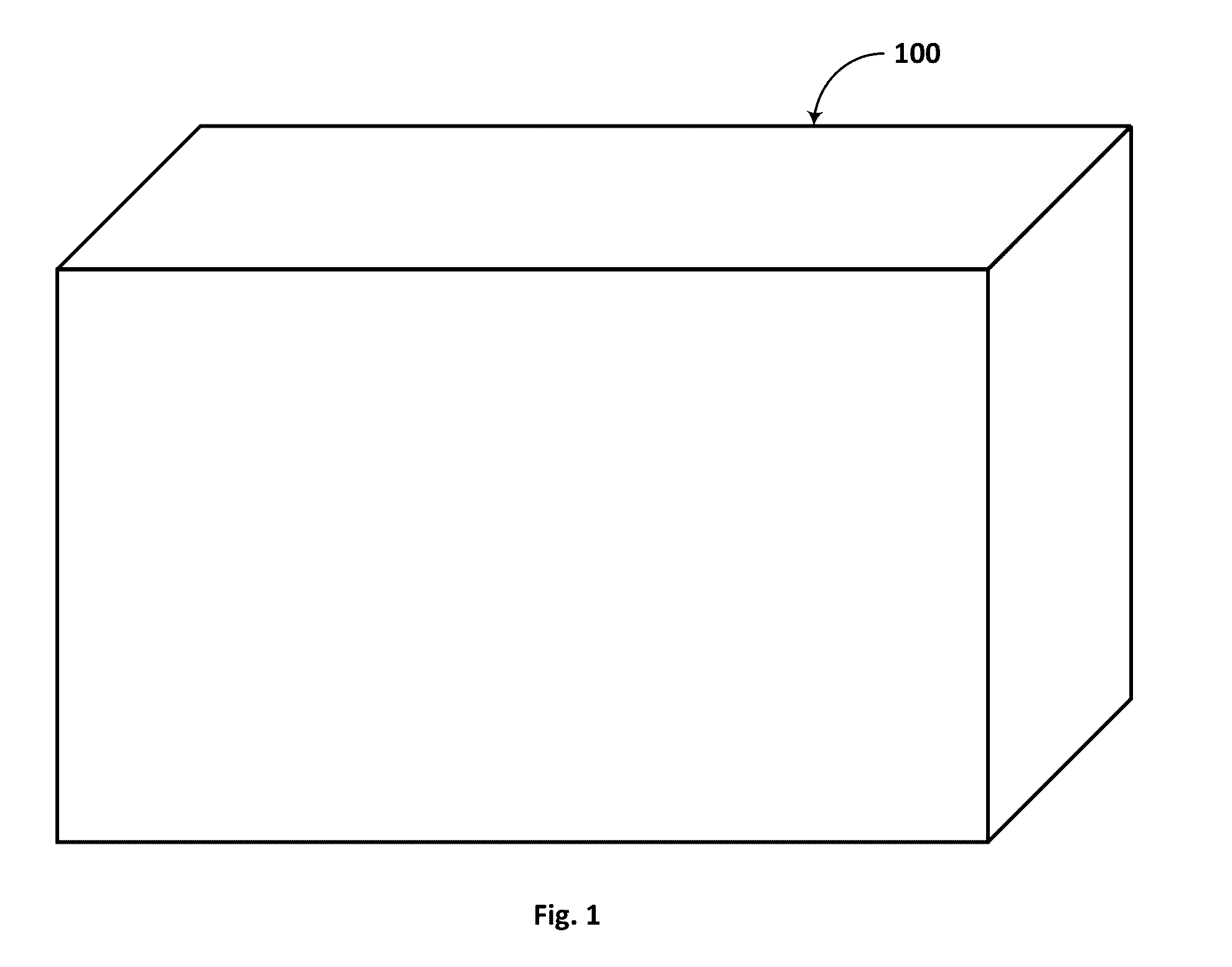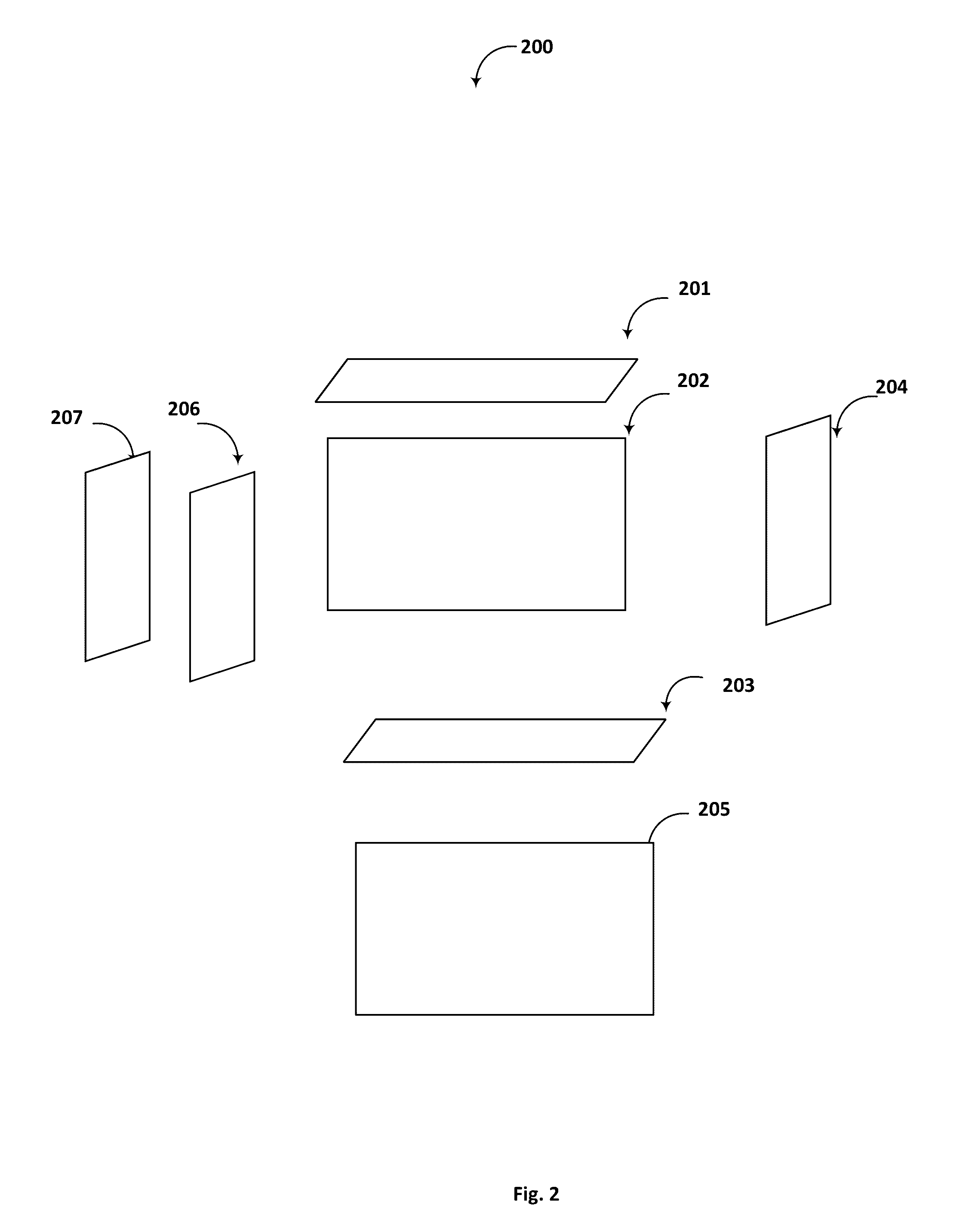Shipping containers used for sea and
land transport of goods are especially vulnerable to intrusion when left in a holding
yard such as at a freight
forwarder.
Containers can be compromised when illegally removed from holding yards or hijacked while in transit.
An emerging issue noted especially by military shippers is a breach of the container through its walls rather than through the container
doors.
Detection of the breach becomes problematic for the shipper and the recipient of the goods until the time the contents are carefully examined.
Often the time between a breach and examination can be lengthy, making it impossible to recover the lost goods and track down the intruders.
Globalization of product manufacturing has brought a significant challenge to consumers in that many products are substituted by counterfeits during and after manufacture, throughout portions of the supply chain and during transit.
These counterfeit products do not perform as intended causing significant financial losses, jeopardizing national security and endangering the health of individuals.
Counterfeiters often
attack the supply chain for electronic parts, costly mechanical parts, expensive perfumes and
cosmetics, and medicines and more.
Some of counterfeiting examples include: medicines, which can be substituted with chemicals with life threatening consequences; bolts which go into critical locations such as bridges and aircraft; fire extinguishers containing
compressed air which cannot perform in urgent situations; and electronic parts that are installed in national defense systems which reduce reliability and performance, further causing life threatening situations.
However, seals currently available today can be replaced by a counterfeited seal, making it virtually impossible to detect an unauthorized entry into the container.
However, the use of RFID tags has significant weaknesses.
However, counterfeiters will use patient and meticulous chemical procedures to dissolve the
adhesive on the tag in the same manner they use processes to re-
label and polish
semiconductor packages.
Placement of a tag on each individual product has the added
disadvantage of increasing cost.
It would be costly and impractical to add RFID tags to each
integrated circuit, which are put in the customary shipping tubes.
Furthermore, a tag cannot be added to many of the miniature electronic devices such as resistors, capacitors, and many increasingly smaller
integrated circuit packages, which are much smaller than an RFID tag.
For example, the dimensions of a 01005
resistor is only 0.4 mm by 0.2 mm; placing a tag on one of these devices is neither physically nor economically feasible.
This approach will also be subject for tag removal or hacking of the tag code, and will only be successful using the more complex tags with a read block.
In this last case there will be a significant cost increase and the addition of the tag embedded in the part can affect its performance.
In addition to the limitations described above, RFID tags can be hacked where the part information can be read and placed in another fresh tag which can then be attached to a counterfeit product.
Some of them have a “read block” feature in place meant to prevent tampering, however, this feature requires a State
Machine or a processor function to be placed in the tag, therefore only the more costly tags will have the feature.
The read block tags will individually be placed in the more costly products, but they will still be subject to the issues previously described.
However, these sealing methods only present a temporary challenge to counterfeits, who, with enough effort in a workshop and with minimal equipment can replace products with counterfeits in containers, reproduce the seals and reattach RFID tags.
If tags are not write-read-write protected internally, they can be readily counterfeited.
These reflections will distort the measurement, and add
noise to the reflected
radiation, which will affect
repeatability and reliability of the measurement.
If these chemicals reflect light that corresponds to a different chemical to what is known to be contained in the
medicine, the
package is thought to be a counterfeit.
Comparison and evaluation of the detected light is subjective in that the color on the display of the test tool is not a clear-
cut choice and is subject to interpretation errors.
Another
disadvantage is chemical testing of medicines is often destructive, which means only a
small sample may be evaluated, thus leaving the greater part of a shipment untested.
Statistical probability of detecting all counterfeit medicines in a particular shipment through sample testing is very low, which leads to ongoing uncertainty about the integrity and quality of any particular shipment.
The market for medicines deserves special mention since the consequences of counterfeits are life threatening and potentially epidemic in scale.
Large shipments of medicines shipped in bulk to pharmacists can be shipped with RFID tags, but have the issues previously described above.
Reliance on the use of RFID tags only as a means to prevent counterfeit parts, means there must be extensive inspection of all components of any particular shipment, which increases the cost of counterfeit parts detection.
 Login to View More
Login to View More  Login to View More
Login to View More 


